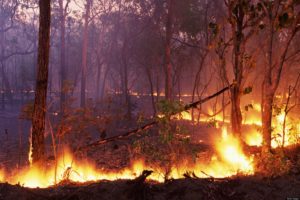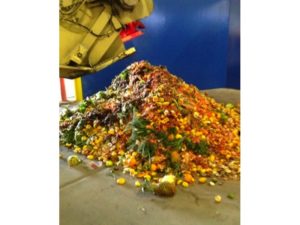As a senior in Drake High School’s environmental studies academy SEA-DISC, one of my many activities is an internship with the local non-profit organization Sustainable Fairfax.
Recently I have been working with Sustainable Fairfax on their water program, conducting interviews with various experts on water use, waste water, and watersheds in Marin County and getting a great perspective on these issues. Along the way I also discovered a few other exciting projects that are leading the way to sustainability in Marin.
At the Sky Oaks Watershed Headquarters near Lake Lagunitas, stewards of the watershed face daily challenges to ensure that the land stays healthy in order to provide enough clean water for the region’s water demands. Removing non-native scotch broom and preventing pollution are regular tasks, but a challenge most aren’t aware of is the threat of wildfire to our water supply.
According to Mike Swezy, the Watershed Lands Manager at Sky Oaks, fire is one of the main concerns for the health of our watershed. Fires not only change the scheme of an ecosystem on the large and visible scale but even at the molecular level. According to a 2004 Colorado State University article in the Journal of Forestry, high soil temperatures consume the layer of leaf litter and organic material on the surface of the soil which causes a physical change in the charged particles of the soil, creating a “tin roof” effect; the soil actually repels water and it runs off quickly.
Burns, whether prescribed or naturally-occurring, also prompt a type of erosion called dry ravel, in which dry soil and rocks slide downhill without any precipitation moving it. And, exposed soil without any plants to shield it or roots to hold it washes away in heavy rains. Accelerated erosion fills streams with sediment, which has a negative impact on the clarity and quality of water.
However, managing fire risk is not a matter of putting them out, Swezy says. In fact, preventing fires entirely could make the situation worse. “Native Americans had carefully used fire for 12,000 years, so the vegetation is shaped for fires.When Europeans arrived we entered an era of fire suppression, and in the early 20th century we got better and better at putting out fires and ended up with too much vegetation. Its sort of a paradox.”
So how do we protect our forests and watersheds from fire without creating more risk? Sky Oaks is working on solutions that include fuel breaks and restoring areas to resemble old-growth forests (think large, old trees with less underbrush), which are more fire resistant. “An open forest is more fire hardy and yields more water…if you think of your forest as a carbon bank, it is safer to have larger trees that won’t burn entirely and are more spread out than to put all of your carbon into many little trees that burn up quickly.”



